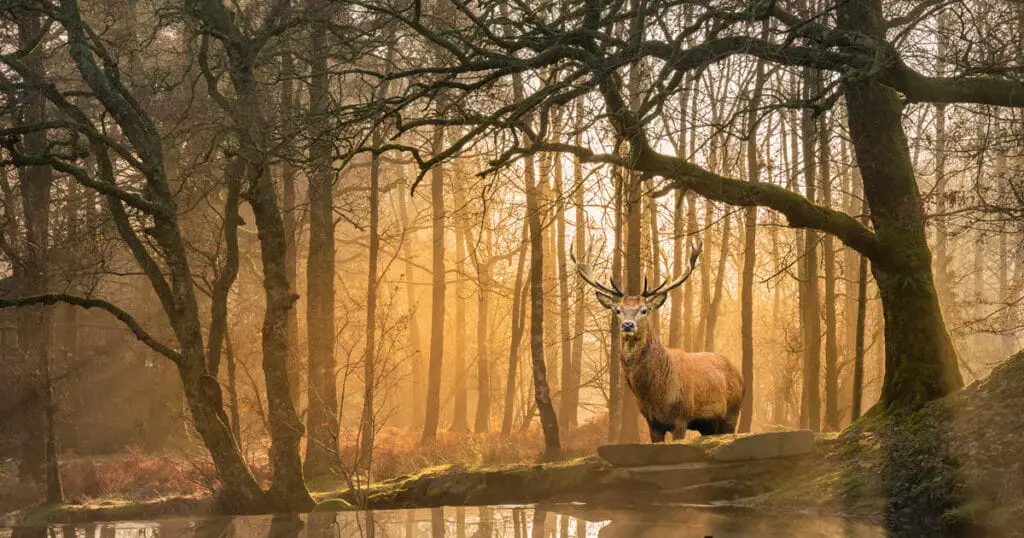The lifespan of a deer can vary depending upon a variety of factors. A few of these factors include how hospitable the deer’s habitat is, the prevalence of humans (and cars) in the area, local predator population, disease prevalence in the herd, and if the deer was bred and raised in captivity or in the wild. These different lifestyles (wild vs domestic) are either easy or challenging, and can have a major impact on how long deer live.
On average, deer can live to be four and a half years old in the wild. In captivity, deer can live to be between six and fourteen years old. However, it isn’t unheard of for some deer to live to be twenty years old, with the oldest deer on record living to the age of 31.
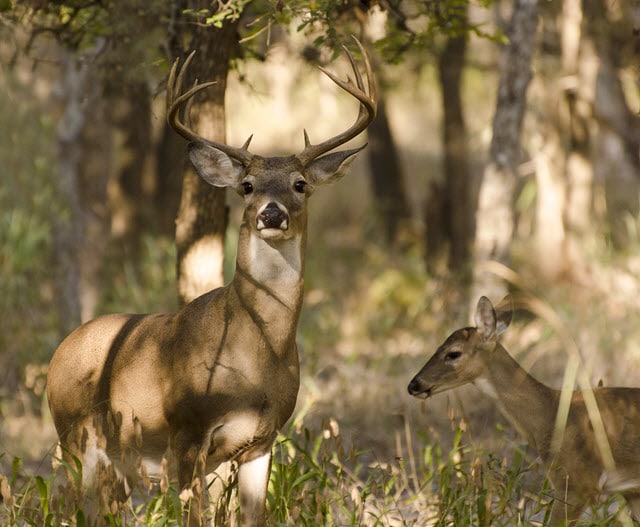
The following article offers a more in depth explanation of the factors that affect a deer’s lifespan. It also includes a guide on how long White Tailed Deer live specifically, since they are the most common type of deer in America.
How Long Do Deer Live Naturally?
Table of Contents
ToggleIf a deer lives in the wild for its entire life, without being killed by predators or disease, then it can live to be twenty years old. But reaching that age is rare, since there are always dangerous things in the wild.
Male deer die more often naturally, with an average lifespan of a little under three years. Female deer live a little longer with an average lifespan of six and a half years. The biggest contributors to deer mortality in the wild will be discussed further in the article.
What Is The Oldest Deer on Record?
The oldest deer on record was a Scottish Red Deer doe named Bambi. She was a domesticated deer owned by the Fraser Family from Kiltarlity in Beauly (Highland, United Kingdom). This deer lived to be 31 years old.
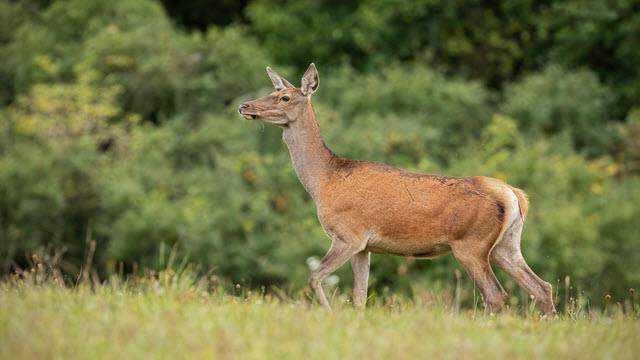
The majority of old living deer tend to be does, since they have a longer average lifespan. This is mainly due to the fact that male deer tend to be larger, and they need to eat more to stay healthy. This requires them to go out looking for food more often, which further exposes them to life threatening dangers.
One important thing to know is that the oldest deer on record also lived in captivity, so she wasn’t exposed to the dangers of the wild.
The oldest wild deer on record was 18 years old, and passed away from a crippling injury.
How Long Does a White Tail Deer Live?
The average lifespan for a white tail deer is four and a half years in the wild, and most don’t live past six years of age. The oldest white tail deer on record lived to be nineteen years old, but it’s very rare to see that in the wild.
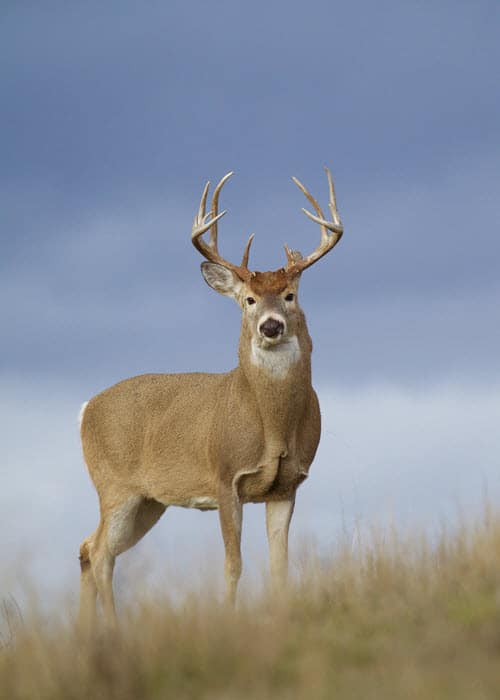
If a white tailed deer lives in captivity, then it can have a lifespan of eighteen to twenty-five years. As with most other deer species, white tail does tend to live longer than male white tail deer. Male white tail deer have an average lifespan of about two to three years. White tail does have an average lifespan of five to six years.
Factors That Affect Deer Lifespan
The majority of a deer’s growth is during the first year of their life, but there are multiple factors that can affect this. The most common factors that affect deer lifespan are:
- The amount of predators in their environment
- Food availability
- Relationship to their mother
Predators
The most common predators of deer include:
- Mountain lions
- Wolves
- Coyotes
- Bears
The majority of deer predators go after their young for a variety of reasons. But the main reason is that young deer are much easier to kill than older deer.
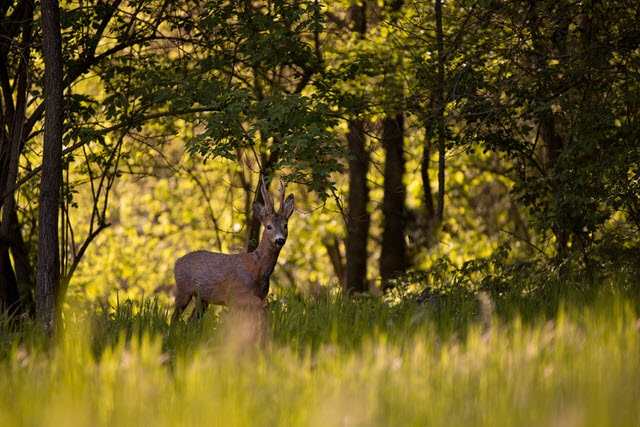
The young are weaker and don’t know how to fight as well as the seasoned deer, making them easy meals for predators. Furthermore, the more predators are in an environment, the higher the chances of a fawn getting killed are.
The amount of predator and prey in an environment is usually controlled by wildlife watchers, but not always. If the predator and prey population is out of control, then a deer’s lifespan can be negatively affected.
Forage Quality & Quantity
Food availability is also a major factor in a deer’s lifespan. Food might not be as available in some environments as others. This mainly depends on the amount of deer already present in the environment.
If there is a wide population of deer already congregated in one area, then there is less and less food available for new fawns. With little food to eat, the lifespan of a deer can be negatively affected.
Maternal Relationship
Lastly, the fawn’s relationship to its mother is a crucial factor on how long it will live. The mother of a fawn is responsible for feeding and taking care of it during its first year of life.
However, this does not always happen. The mother might be killed by predators or succumb to other elements of the wild, leaving the fawn a very slim chance at survival.
Most Common Causes of Deer Mortality
The most common things that cause deer mortality rates are:
- Disease
- Auto accidents
- Hunting
- Weather
While these are not all of the things that cause a deer’s mortality, they are the most common.
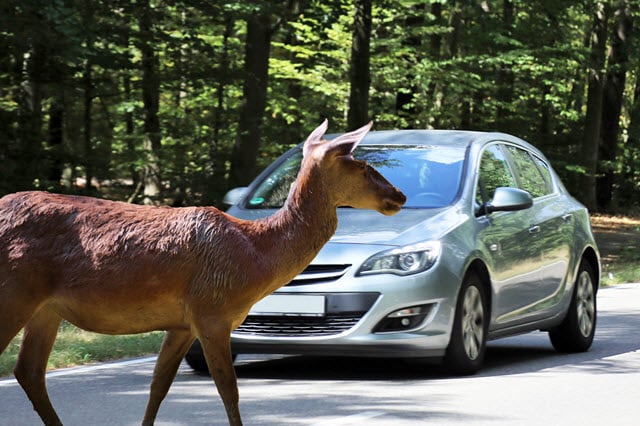
Let’s take a closer look at these common reasons deer die.
Deer Can Succumb to Disease
Disease is a common cause for deer mortality in the wild. Since the conditions aren’t maintained or cleaned by a keeper, disease has all the right conditions to grow. Some of the most common disease that kill deer in the wild are:
- Chronic wasting disease (CWD)
- Epizootic hemorrhagic disease (EHD)
- Bovine tuberculosis (BTB)
CWD has a nineteen percent infection rate among deer herds, primarily in male deer. This can lead to less mating and fewer fawns born. If more than thirty percent of a herd gets infected and dies from it, then a herd will be unable to sustain themselves.
EHD is significantly more contagious, with an infection rate of ninety percent primarily among white tailed deer.
Lastly, BTB is not present enough in most areas, though wildlife watchers do keep an eye out for it since it can spread to humans.
Auto Accidents are a Leading Cause of Early Death in Deer
Auto accidents are responsible for killing or injuring more than one million deer annually.
Deer tend to wander onto roads that are not used as much. They get used to the roads being quiet and safe and freeze up when something dangerous starts coming their way.
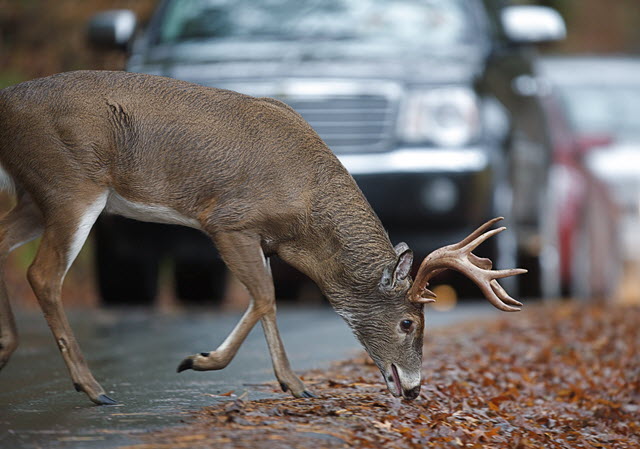
Furthermore, the depth perception of a deer is not great.
Their eyes on the sides of their heads rather than the front, which makes it harder to see objects in front of them. As a result, deer aren’t able to see that a car is heading towards them most of the time.
Most deer die on impact, but they don’t survive for much longer afterwards if they leave the scene of an accident injured.
Hunting as a Common Cause of Early Mortality
Hunting is also a significant cause of deer mortality, particularly in male deer. Antlers are a popular hunting trophy and can be very valuable, so it’s common for male deer to be taken out by hunters.
Severe Weather & Major Storms Can Kill Deer
Lastly, weather conditions can affect a deer’s mortality rate.
For example, severe storms can cause trees to fall or forests to flood. About five percent of deer are caught beneath a fallen tree or in the midst of an intense flood.
Furthermore, forest fires can cause a deer’s food supply to severely decrease, making it harder for them to find food and survive.
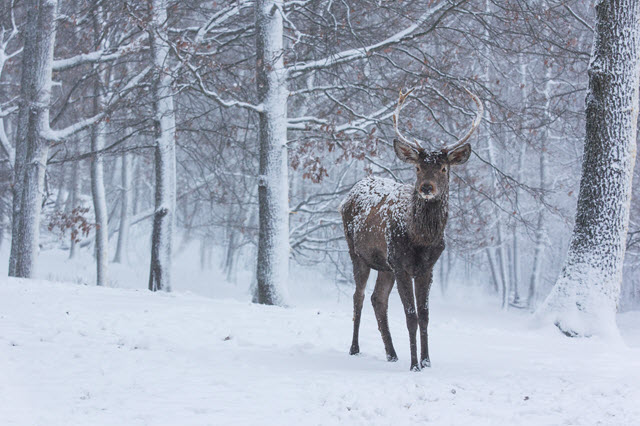
And finally, a severe, long winter can make it difficult for deer to find sufficient forage and lead to starvation.
While weather is not the most common factor that affects deer mortality rates, it can still play a part.
Final Thoughts About Deer Lifespan
A deer living in captivity versus living in the wild is the biggest factor which produces a difference in deer lifespan.
This is true because the conditions are immensely different. The wild has significantly more dangerous elements to face and survive at all times, from disease to predators.
Captivity is much more controlled with far less danger, so it’s no surprise that captive deer live significantly longer.
Because of this and other factors, the average lifespan of a deer doesn’t have a clear answer. It’s mainly up to elements that can’t be controlled, in the wild or in captivity.

